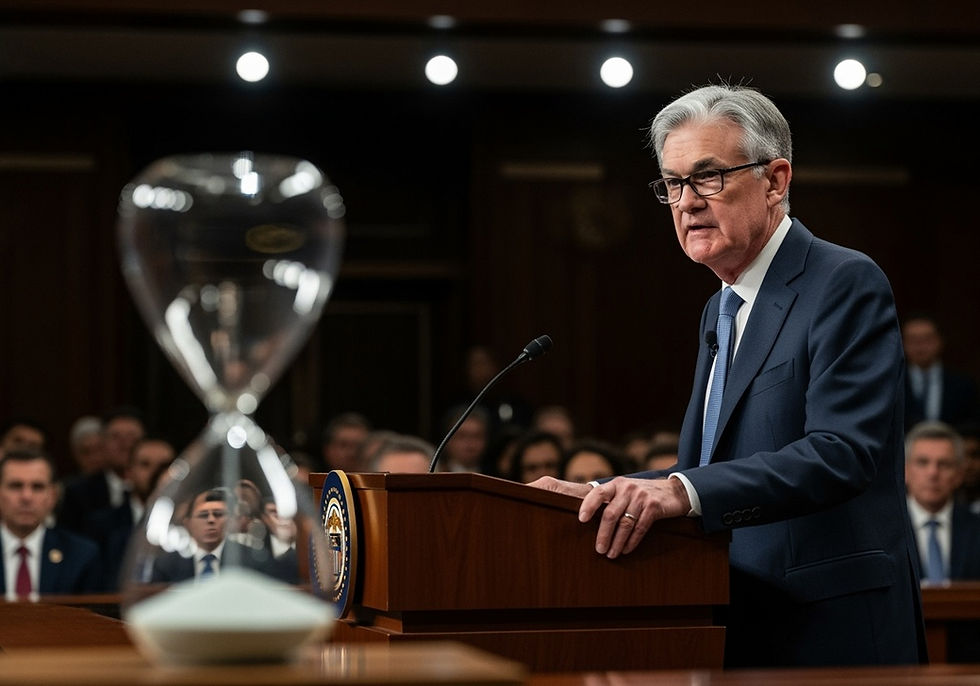Fourth Quarter Update
- Matt Oberholzer

- Jan 13, 2023
- 3 min read
Updated: May 8, 2023
Market Update – 2022 Financial Highlight
On January 4th, 2022, the DJIA hit an all-time high before a series of economic challenges hit financial markets hard, with 2022 marking the first year since the 1800’s where both stocks and bonds experienced double digit negative returns.
Post-pandemic supply shortages combined with pent-up consumer demand, resulted in the highest inflation rates since 1982, reaching 9.1% before tapering near year end. The global supply shortage was further exacerbated by Russia’s war on Ukraine.
The Federal Reserve has been combatting inflation with a series of sharp, yet steady interest rate hikes and a reduction of the size of the Fed’s bond portfolio, reflecting their most aggressive monetary policy since the 1980’s. Additional rate increases are expected in the first half of 2023. The aggressiveness of the rate increases causes some concern about the Fed’s ability to navigate a “Soft-Landing” without overly slowing the economy into recession.
The combination of high inflation, rising interest rates, recession concerns, and the war in Ukraine came together to create the perfect storm which led to significant declines across almost every asset class. In a reversal of recent trends, value stocks outperformed growth stocks and international stocks outperformed domestic equities. Real Estate, which had been a top performer when interest rates were low, became one of the worst performing sectors.
As interest rates climb, there is an opportunity to extend maturities to increase and lock in yields in the fixed income portion of our portfolios. As short-term bonds have matured, Infinity Wealth Counsel has employed a strategy of reinvesting the proceeds into intermediate term high quality bonds. We continue to lean toward high-quality bonds, as a potential recession would likely increase the default rates of high-yield or “junk” bonds.
Lastly, the cryptocurrency markets experienced turmoil as players in this space like FTX have shown how lack of government oversight/regulation can lead to additional unnecessary risks. For the year, Bitcoin, the most well-known and widely held cryptocurrency, lost nearly 65% of its value.
| Index | 4th Qtr | YTD |
Bonds | S&P US Aggregate Bond | 1.6% | -12.0% |
US Large Stocks | S&P 500 | 7.5% | -18.1% |
US Small Stocks | Russell 2000 | 6.2% | -20.4% |
International Stocks | MSCI World ex US | 16.2% | -14.3% |
Emerging Markets Stocks | MSCI Emerging Markets | 9.7% | -20.1% |
Real Estate | Dow Jones US REIT | 4.8% | -26.0% |
While short-term market predictions are generally of little value, market declines, such as we just experienced, do provide opportunities for long-term investors to purchase shares at more attractive prices.
Secure 2.0
President Biden signed a $1.7 trillion budget bill on December 29, 2022, that includes bipartisan retirement savings legislation: the SECURE 2.0 Act of 2022. The law includes significant changes to 401(k), 403(b), IRA, and Roth accounts.
There are more than one hundred provisions in SECURE 2.0. Some provisions will not take effect for up to 10 years and many were geared toward employers who offer retirement plans. Below is a summary of some key provisions which are most likely to effect individual investors:
The age for Required Minimum Distributions (RMD) from IRAs and other retirement plans has moved from age 72 to 73 starting in 2023 and will increase to age 75 in 2033. Penalties for missing required distributions have been reduced, but are still significant and should be avoided.
RMD’s are no longer required on Roth 401k accounts. This aligns the rules on Roth 401ks with the rules already in place for Roth IRAs.
Beginning in 2025, individuals aged 60-63 will be able to make catch-up contributions to their 401(k) of up to $10,000 per year. The $7,500 catch-up limit is still in force for anyone else over age 50.
In certain situations, unused money in 529 plans will be allowed to be rolled over to a Roth IRA for the benefit of the 529 beneficiary.
New benefits that employers may now offer to their employees include:
Employer contributions into retirement plans may be made into Roth accounts. These contributions would be taxable to the employee.
Employers may choose to make matching contributions based on employee student loan payments.
Employers may offer emergency savings plans that allow employees earning less than $135,000 per year to contribute on a pre-tax basis until the plan reaches a balance of $2,500.
Supporters of the legislation tout changes designed to encourage more workers to save for retirement. Others have expressed concern that some provisions in SECURE 2.0 primarily benefit high-income earners.




Comments